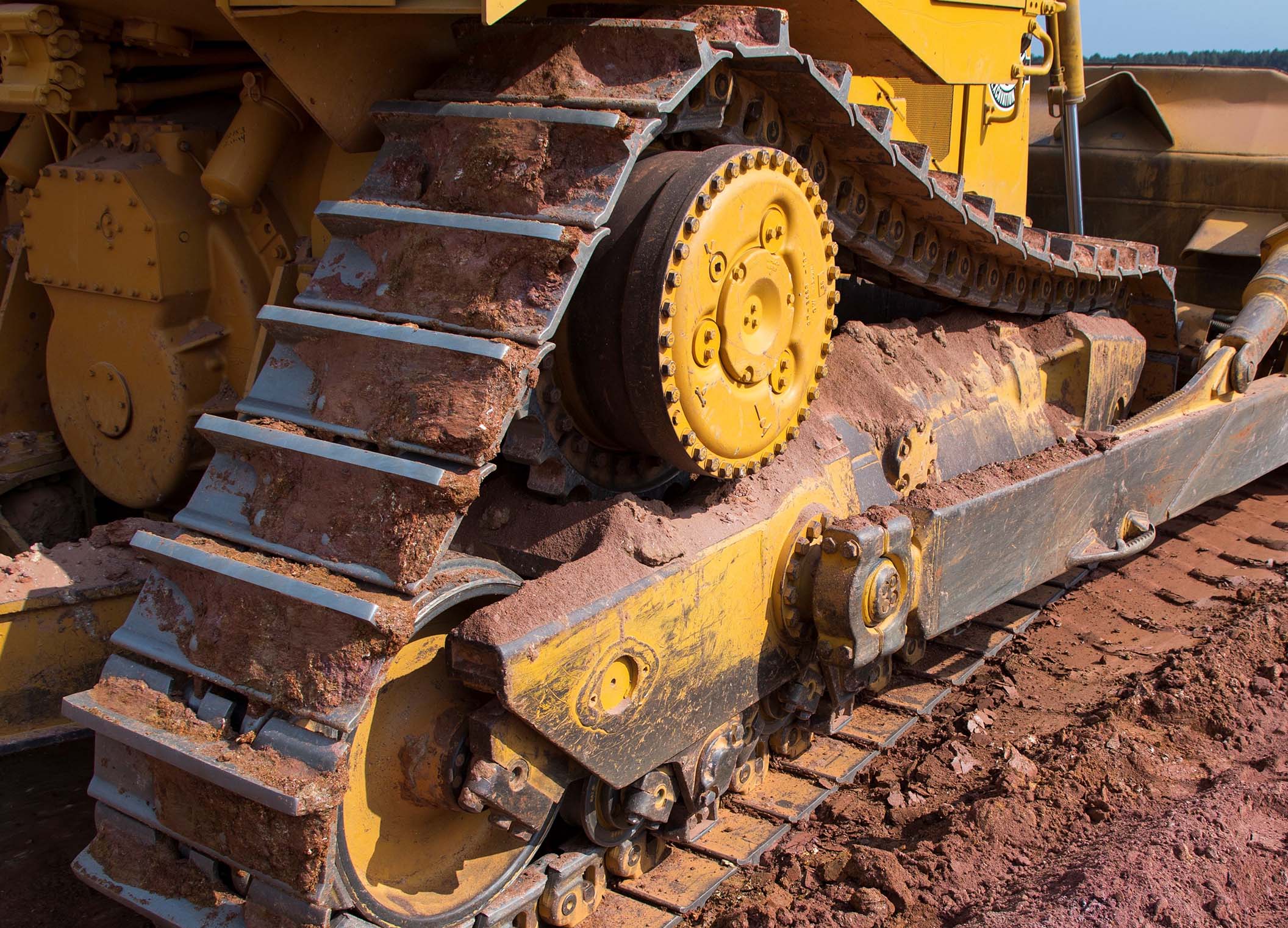As one of the most important and heavily utilised components of an item of construction or excavation equipment, your machine’s undercarriage requires ongoing attention and care if it’s to deliver the operational productivity and efficiency that you’d expect of a major investment. What’s more, as an incorrectly functioning undercarriage can affect the performance and lifespan of other components, resulting in decreased productivity, downtime and preventable repair and ownership costs. To get maximum productivity and lifespan from your excavation and construction equipment like dozers and excavators, you must operate your machines correctly, carry out undercarriage maintenance regularly and understand how undercarriage wear is caused.
Factors that Affect Undercarriage Wear
A wide range of factors can affect undercarriage wear, including the materials the machine is working with, the terrain it’s operating on and the application or type of job that it’s performing.
Applications
The application and materials that a machine works with all have an effect on the rate of wear on different undercarriage components.
Loading
Shifts the weight from the rear to the front of the machine, affecting the front and rear rollers.
Dozing and Push Loading
Shifts the weight to the front, affecting the front rollers and idlers.
Excavating
Shifts the weight to the digging side, while spreading dumped materials affects the components on the undercarriage side.
Ripping
Shifts the weight to the rear of the machine, affecting the rear rollers, sprockets and idlers.
Terrain
While you can’t control the terrain that you’re working in, your operators must be aware of how different terrain contours and slopes affect undercarriage wear.
Working on a Crown
Shifts the load to the inboard components, affecting the grouser ends, inner links, rollers and idler treads.
Working in a Depression
Shifts the load to the outboard components, affecting the outer links and rollers, idler treads and grouser ends.
Working Uphill
Shifts the weight and load balance to the rear, affecting the rear rollers, forward drive side sprockets and bushings.
Working Downhill
Shifts the weight and load balance to the front of the machine, affecting the front track rollers and idlers.
Working on a Side Hill
Shifts the weight and load to the downhill side of the machine, affecting the components on the upper side.
Undercarriage Maintenance
Correct undercarriage maintenance for dozers, excavators and other machines involves daily walkarounds and scheduled inspections and servicing to identify issues early on and avoid unnecessary repairs and parts replacements.
Daily Walk Around
Inspecting your machines’ undercarriage before each shift helps to identify potential undercarriage issues and improves safety for your operators and everyone on site. Operators should also check for debris throughout their shift when working in tough terrain or with tough materials.
Regular Cleaning
Clean out your machines’ undercarriage as often as possible to prevent ‘packing’ between components like rollers, links, bushings and sprocket teeth and remove stones, twigs and other demolition debris that can’t be extruded through the centre-punched shoes.
Scheduled Inspections
Regardless of the size of your fleet, you should have an inspection schedule to ensure your machines are inspected on a regular basis to identify any damaged components or unusual wear patterns and track tension.
Scheduled Servicing
Having your machines serviced in line with the owner’s manual ensures your machines and their undercarriage components get the right servicing attention throughout their lifespan. Additionally, scheduled servicing helps to protect warranties.
Undercarriage CTS
Official Cat dealers like Terra Cat provide a Custom Track Service (CTS), which is a comprehensive program that leverages advanced diagnostic equipment for managing the undercarriage system on your machines.
Correct Operations
To protect your machines from unnecessary wear during operation, your operators should be aware of how applications, materials and terrain affect undercarriage components, and operate their machines correctly.
Correct Track Adjustment
As every application and working condition affects undercarriage wear differently, correct adjustment is key to extending the life of your machines’ undercarriage. Your operators should adjust the track to suit the application and underfoot conditions in which they’re working.
Correct Running Speed
As wear increases proportionally with speed, operating a machine at high speeds unnecessarily can cause wear across the undercarriage components, including roller, link, idler and tread wear in addition to increasing fuel consumption and carbon emissions.
Avoid Unnecessary Reversing
Reverse operations compound bushing and sprocket wear, so operators should avoid reversing whenever possible, especially when working on an incline or decline as this further compounds undercarriage component wear.
Avoid Slipping Tracks
When the tracks slip, wear is increased across all undercarriage components, especially grouser bars, and production capacity can also be significantly reduced which has a direct effect on your business's bottom line.
Alternate Turning Directions
Favouring one side when operating a machine can cause uneven wear on one side of the machine due to the increased usage and horsepower, and often results in link side rail, track roller flange and idler flange wear.
Talk to the Cat Undercarriage Experts
Terra Cat is the official Cat dealer in New Zealand and the right choice when you need a Cat undercarriage solution such as undercarriage inspections and undercarriage assurance that offers you support far beyond the standard new part warranties. To speak with a Cat specialist about your undercarriage requirements, contact our team today.


